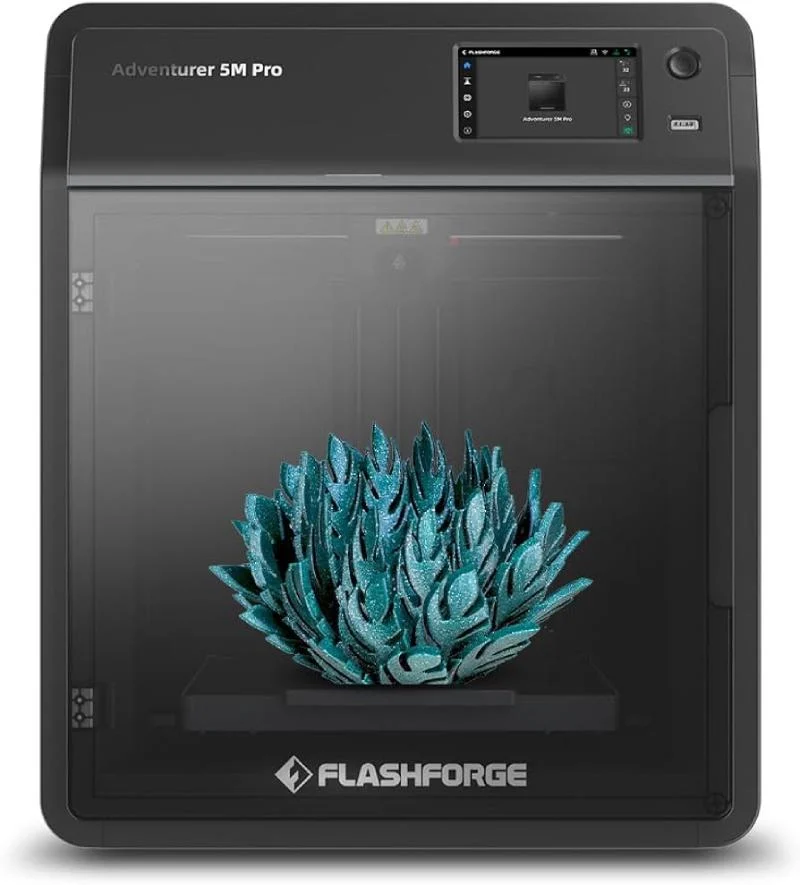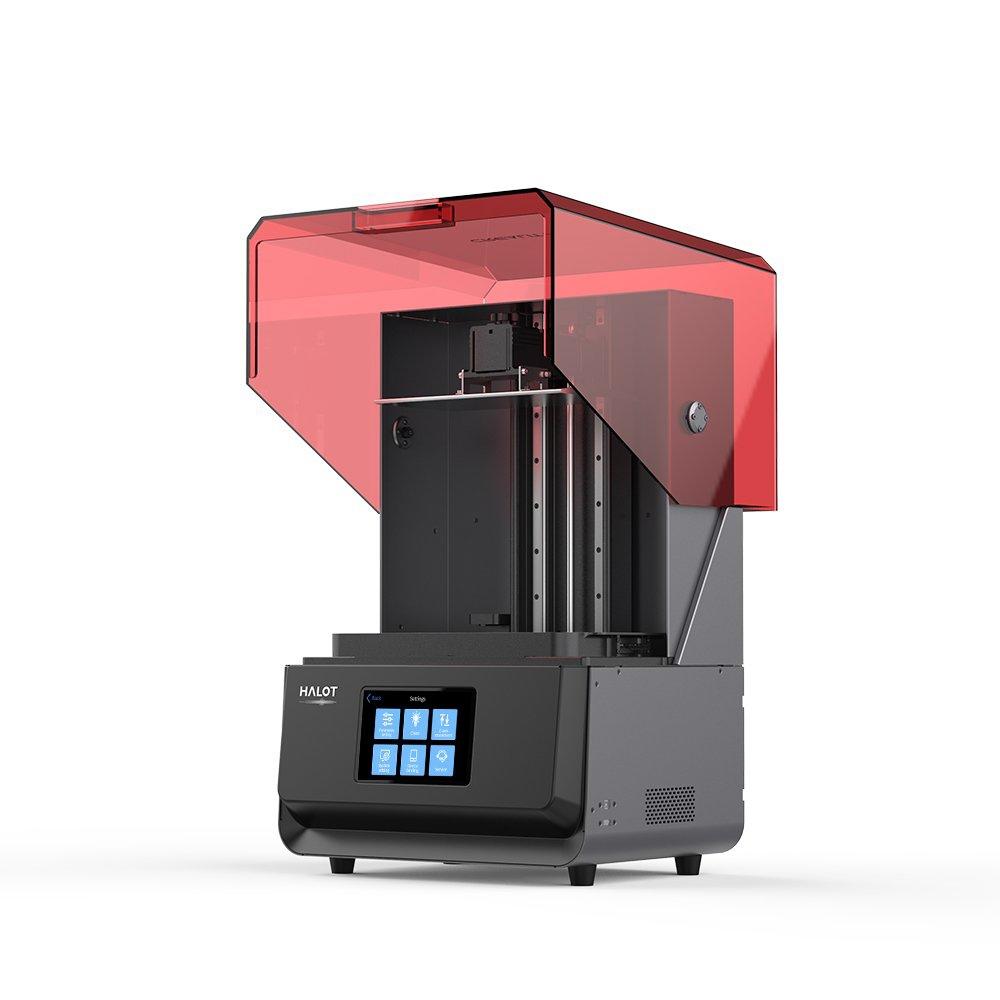Compare Adventurer 5M PRO vs Halot Max
Comparison between the best 3D printers
Choose the best 3D printer at the best price. The cheapest 3D printers are here.
Buy a 3D printer here with 3D Fila.
 |
 |
|
| Model | Adventurer 5M PRO |
Halot Max[BUY Halot Max] |
| Printing Material | Filament | Resin |
| Buy Filament for Flashforge Adventurer 5M PRO | Buy Resin forCreality 3D Halot Max | |
| Estimated price | $599,00 | $3000,00 |
| Manufacturer | Flashforge | Creality 3D |
| Release Year | 2023 | 2021 |
| Print Volume [mm] | 220x220x220 | 293x165x300 |
| Printer Size [mm] | 380x400x453 | 480x387x770 |
| Weight [kg] | 10,8 | 32,5 |
| Power Loss Recovery | YES | NO |
| Maximum Resolution [mm] | 0,1 | 0,03 |
| Processor | ||
| Display | Touchscreen 4,3'' | Display touchscreen 5'' |
| Power Supply | 350 W | |
| Connectivity | Wifi / Ethernet / USB | SD / USB / Wi-Fi |
| Operating systems | Windows, Linux, Macbook | Windows, Mac, Linux |
| Date of registration in the system | 2024-07-09 | 2022-11-04 |
| Release date | 2023 | 2021 |
| Extra features | The Flashforge Adventurer 5M PRO features advanced features such as a CoreXY motion system, direct drive extruder, print speeds of up to 600mm/s and maximum acceleration of 20,000mm/s². It features fast nozzle changes, automatic calibration, active vibration compensation, camera monitoring, time-lapse video, HEPA and carbon filters for particles and VOCs, and an intuitive 4.3-inch touchscreen interface. Ideal for printing materials such as PLA, PETG, ABS and TPU. | The Halot Max printer stands out for its large print size (293 x 165 x 300 mm) and uses SLA technology. It has an integral light source for improved accuracy and a strong core with an advanced operating system. Its Z-axis module ensures high precision, supported by efficient slicing software. The machine offers online OTA updates and boasts an adjustable layer thickness between 10 and 200 microns. Its XY-axis resolution is 3840*2160, with 0.05 mm accuracy, and an integral 405nm light source. The printer includes a 5" touchscreen and multiple connectivity options, such as USB, Creality Cloud, and HALOT BOX WiFi. With cutting-edge technology, the Halot Max is ideal for printing small models with uniform precision, thanks to its self-developed lighting system and stable printing mechanism, which includes dual linear guides, ball screws, and an intelligent brake system. |
| Support for multiple colors and materials (AMS and CFS) | NO | NO |
Notes * |
||
| Cost-benefit | 7 / 10 | 5 / 10 |
| Hardware | 3.5 / 10 | 1 / 10 |
| Tela | . | . |
| Print volume | 3 / 10 | 3 / 10 |
| Performance | 5 / 10 | 9 / 10 |
| [BUY Halot Max] |
Conclusion |
| In conclusion, the comparison between the Flashforge Adventurer 5M PRO and the Creality 3D Halot Max highlights two distinct approaches to 3D printing, both catering to specific user needs and preferences. The Adventurer 5M PRO emerges as a versatile option, particularly for hobbyists and smaller businesses seeking affordability without compromising on quality. Its user-friendly features, such as power loss recovery, rapid print speeds, and compact design, make it suitable for a wider range of printing materials and applications. Additionally, its significant connectivity options and support for multiple operating systems enhance its accessibility, while its features demonstrate a solid cost-to-benefit ratio. On the other hand, the Halot Max is tailored for users prioritizing precision and larger print sizes, making it an excellent choice for professional applications. Its SLA technology allows for higher accuracy and detail, appealing to users needing fine print quality, especially for intricate models. The advanced operating system and superior resolution underline its capability in producing detailed outputs, but this comes at a significantly higher price. Ultimately, the decision between these two printers should be guided by the intended use case and budget constraints. For those seeking more economical options with acceptable quality, the Adventurer 5M PRO is commendable. Conversely, professionals aiming for high precision and larger models might find the investment in the Halot Max worthwhile despite the higher cost. Each printer stands out in its own right, making them both significant contenders in the realm of 3D printing. |

